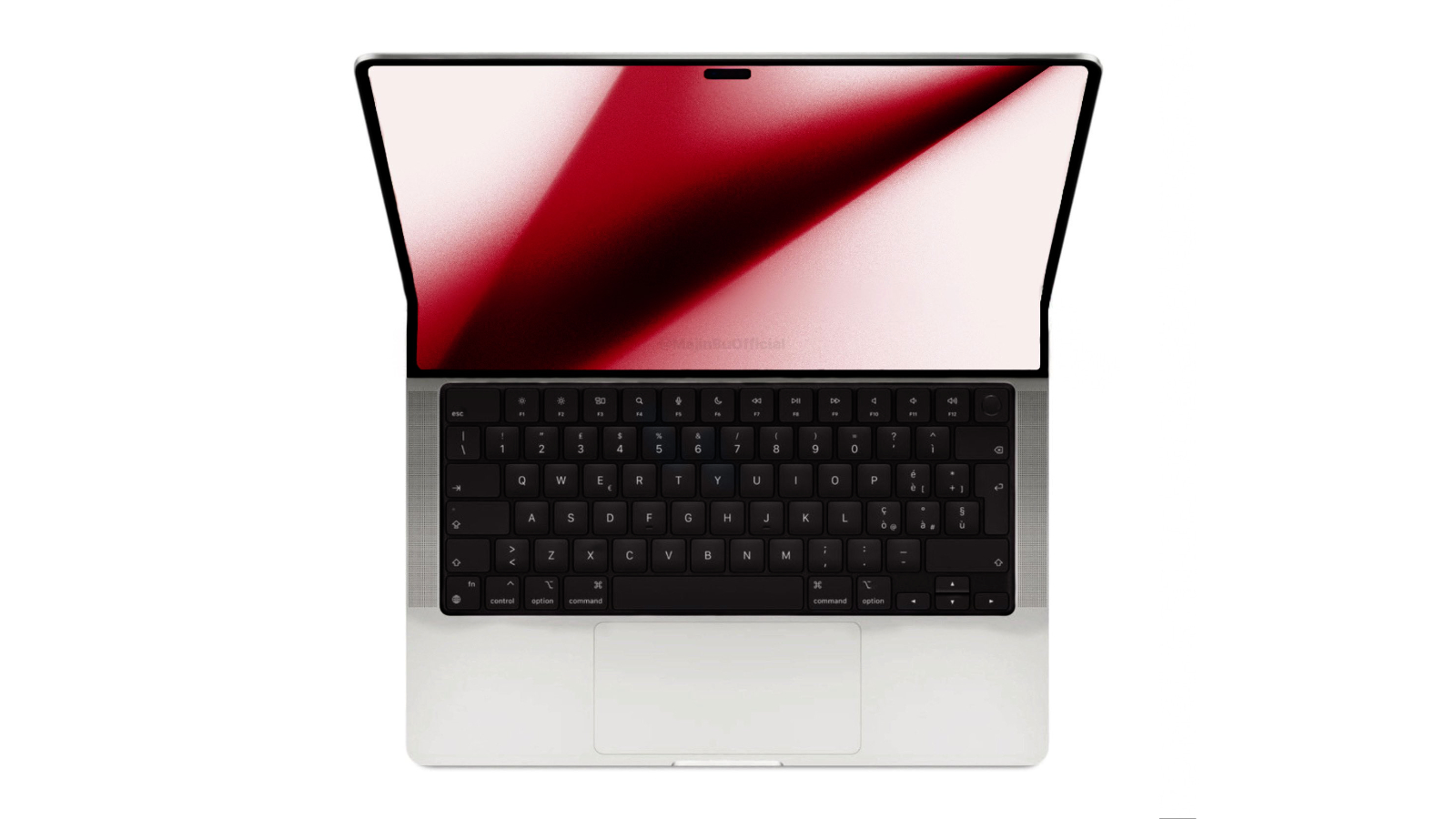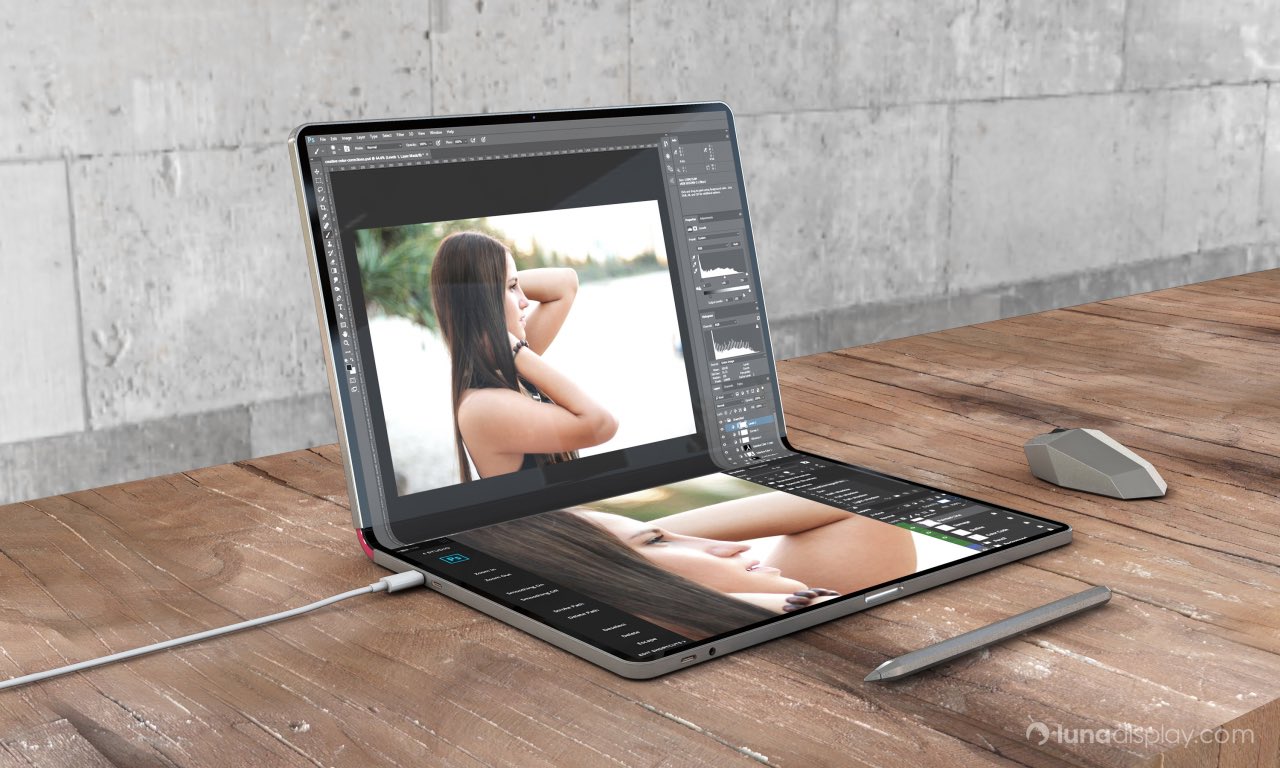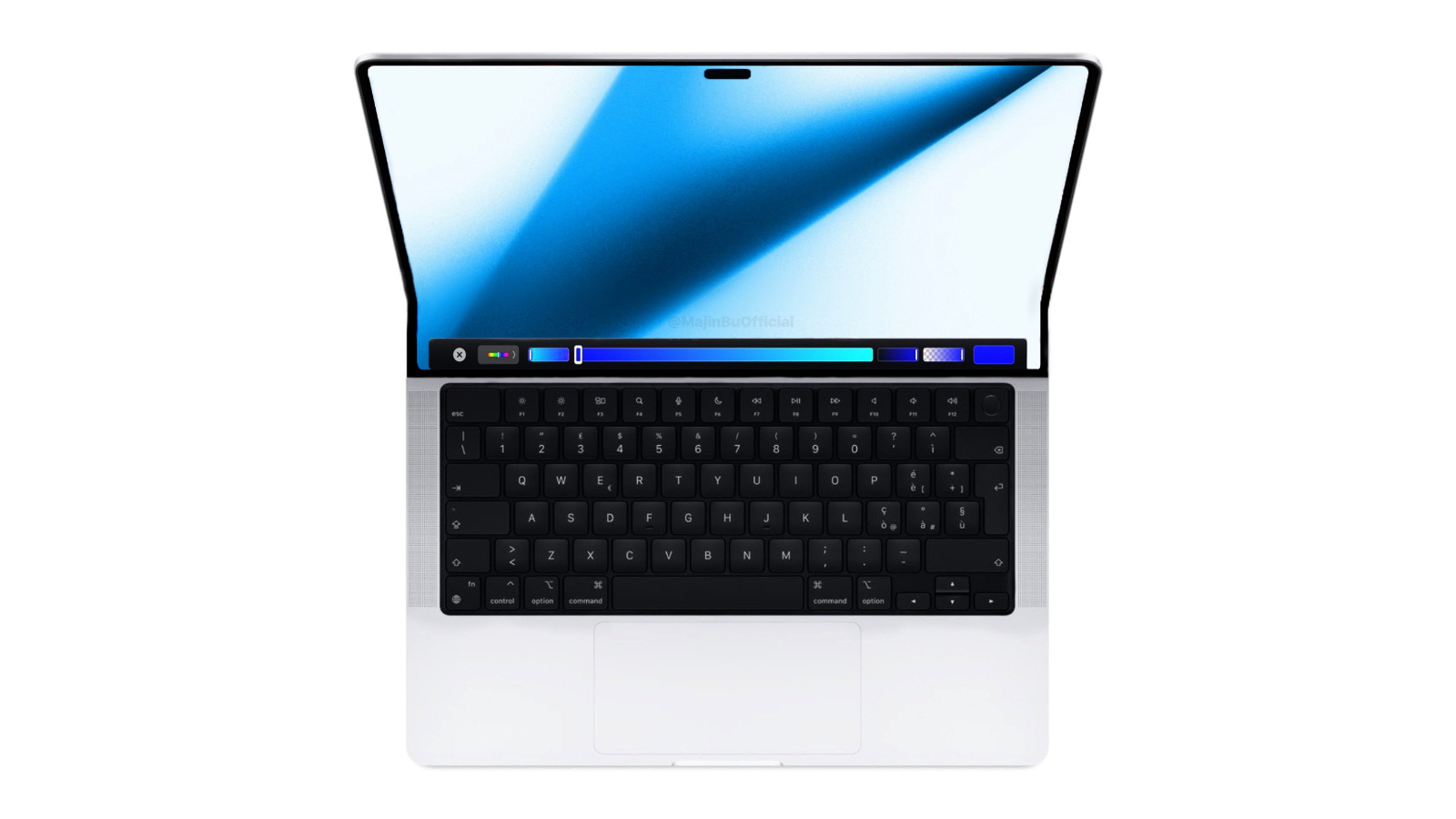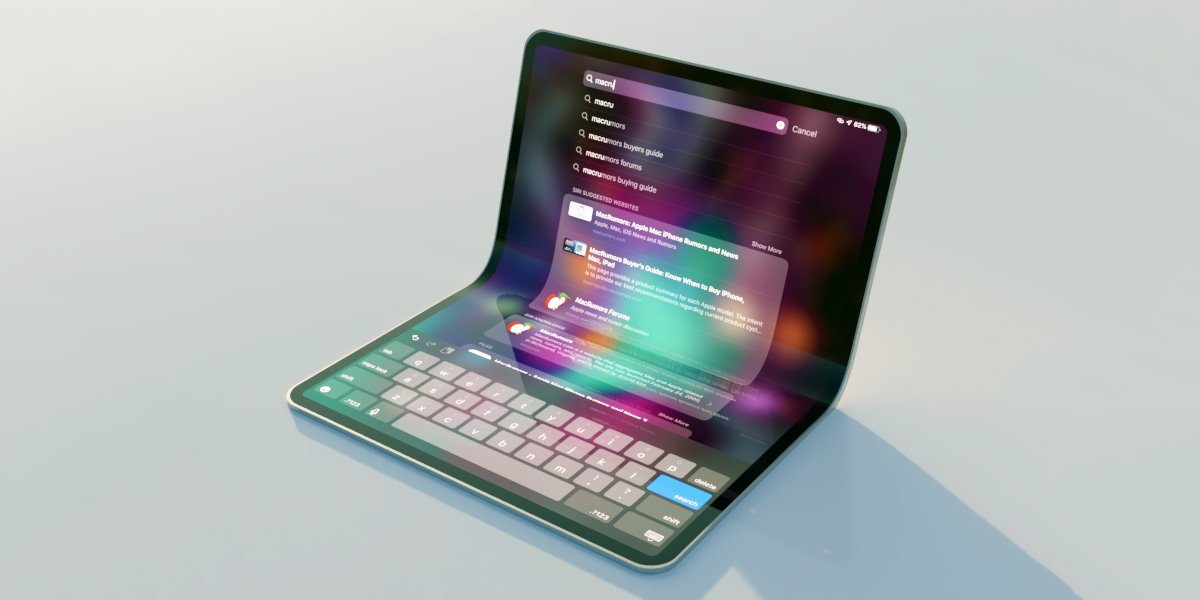How Would a MacBook With a Foldable Display Work?Amid reports of Apple working on a
notebook with a foldable display, how exactly could such a device be implemented?
<div class="center-wrap">
 Concept by Majin Bu
Concept by Majin Bu</div>
Earlier this week, Display Supply Chain Consultants (DSCC) analyst
Ross Young claimed that Apple is exploring the possibility of offering notebooks with foldable displays. The company is said to be discussing such devices with displays around 20-inches in size with its suppliers. This display size could allow for 4K resolutions or higher, Young added.
Young has revealed a wide range of accurate insights into Apple's plans, such as the
iPhone 13 Pro's ProMotion display, the
display size and bezels of the sixth-generation iPad mini, the 14- and 16-inch MacBook Pro's
mini-LED displays with ProMotion, and more, so his reports are worth taking seriously. He says that the foldable notebook could compose a whole new product category for Apple, but with so little known about the mysterious new form factor at this very early stage, there appear to be three main options for how Apple could conceive of the device.
<h3>All-Screen MacBook</h3>
Perhaps the most obvious implementation for a foldable Apple notebook is an all-screen MacBook with a display that spans the entire interior of the clamshell design. Young appeared to speculate that this implementation could result in a dual-use product, saying that it may be able to work as a notebook with a full-size on-screen keyboard when folded and as a monitor when unfolded and used with an external keyboard.
<div class="center-wrap">
 Concept by Astropad
Concept by Astropad</div>
There are several drawbacks to the likelihood of this design, including Apple's well-known reticence to offer a touchscreen-based Mac, with company executives often publicly
shooting down the possibility of it ever offering such a device. For example, former Apple design chief Sir
Jony Ive has said that a touchscreen Mac would "not be a particularly useful or appropriate application of Multi-Touch."
macOS is heavily optimized for indirect trackpad or mouse input, rather than touch. In 2020, Apple engineering chief
Craig Federighi said that Apple designed and evolved the look of macOS in a way that felt comfortable and natural across a family of devices, and something like touch is not remotely considered. This is not to mention the potential ergonomic issues of a touchscreen keyboard and trackpad. As a result, an all-touchscreen MacBook seems to be very much out of step with the company's thinking in recent years.
<h3>Foldable Display With Physical Keyboard</h3>
A more out of left field form factor could be a MacBook with a vertically longer display that folds at the hinge and meets the device's physical keyboard. This solution could offer the benefits of a larger display with room for peripheral on-screen content, while still retaining the benefits of a physical keyboard and trackpad.
<div class="center-wrap">
 Concept by Majin Bu
Concept by Majin Bu</div>
The design could also offer a way to revive the Touch Bar without sacrificing physical function keys. In
another interview, Federighi explained that the MacBook Pro form factor with the Touch Bar avoids the ergonomic problems caused by other touchscreen laptops:
We really feel that the ergonomics of using a Mac are that your hands are rested on a surface, and that lifting your arm up to poke a screen is a pretty fatiguing thing to do.
Regardless of whether or not the Touch Bar is revived, extending the MacBook's display in this way would abide by Apple's ergonomic demands of not lifting one's arms to touch the screen while offering a new location for touch input.
In this instance, the 20-inch display size could be more plausible, potentially offering an even larger MacBook Pro to sit above the 16-inch model in the lineup, akin to the 17-inch MacBook Pro that the company offered between 2006 and 2011.
<h3>Just a Foldable iPad Pro?</h3>
While Young described the device as a "foldable notebook," there is a chance that, if it is an all-screen device, it could actually be a foldable
iPad Pro. After all, a touch-based all-screen notebook running macOS would likely cannibalize the ‌iPad Pro‌, so the device running iPadOS could make more sense.

This thinking would also seemingly line up to Apple's current outlook. When asked about touchscreen Macs last year, John Ternus, Apple's senior vice president of hardware engineering,
pointed to the iPad:
We make the world's best touch computer on an iPad. It's totally optimized for that. And the Mac is totally optimized for indirect input. We haven't really felt a reason to change that.
There have been sketchy
rumors of Apple working on a foldable iPad Pro in the past, so the idea would not be totally unheard of.
It is also noteworthy that this implementation could also line up with
rumors of a larger iPad Pro. Last summer,
Bloomberg's Mark Gurman suggested that Apple was working on
even bigger iPad models that could further "blur the lines" between tablet and laptop:
I'm told that Apple has engineers and designers exploring larger iPads that could hit stores a couple of years down the road at the earliest. They're unlikely for next year—with Apple's attention on a redesigned iPad Pro in the current sizes for 2022—and it's possible they never come at all. But a big iPad would be the perfect device for many people, including me, and would continue to blur the lines between tablet and laptop.
Now, at least two Apple suppliers,
BOE and
LG Display, are preparing to supply Apple with OLED displays in larger sizes for future
iPad models.
Larger display sizes may bring the ‌iPad‌ closer the Mac than ever before, but there would likely also need to be software improvements to properly take advantage of the larger display. Apple last updated the ‌iPad Pro‌
in April 2021, but some users have complained that iPadOS does not take full advantage of the hardware the ‌iPad Pro‌ has to offer, making it more challenging to replace a Mac than it could be.
Gurman opined that Apple will ultimately need to allow Mac apps and a Mac-like multitasking experience with more flexible arrangements of app windows on the ‌iPad Pro‌. By the time even larger iPads come to market, it is likely that further iterations of iPadOS may improve the experience to take better advantage of the ‌iPad‌'s hardware.
<h3>Release Date</h3>
Young said that the launch timeframe for Apple's foldable notebook is "likely later" than 2025, with 2026 or 2027 being floated as reasonable possibilities, but there is still a chance Apple discontinue the project long before then.
Meanwhile, Young said that Apple's long-rumored
foldable iPhone has been delayed until 2025, a significant delay compared to
previous predictions that the device would
launch in 2023 or 2024.
This article, "
How Would a MacBook With a Foldable Display Work?" first appeared on
MacRumors.comDiscuss this article in our forums
<div class="feedflare">
<img src="[url]http://feeds.feedburner.com/~ff/MacRumors-Front?d=yIl2AUoC8zA" border="0"></img>[/url]
<img src="[url]http://feeds.feedburner.com/~ff/MacRumors-Front?d=6W8y8wAjSf4" border="0"></img>[/url]
<img src="[url]http://feeds.feedburner.com/~ff/MacRumors-Front?d=qj6IDK7rITs" border="0"></img>[/url]
</div>
Source:
How Would a MacBook With a Foldable Display Work?